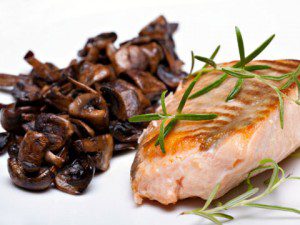Guest Writer for Wake Up World
Although we can find many foods in the supermarket that have been fortified with a synthetic form of Vitamin D, there are only a select number of foods containing vitamin D in them naturally.
Normally, our body takes in Vitamin D in the form of sun-synthesis through the skin. But in our modern times, where many of us spend countless hours inside houses, cars and shopping malls, our actual exposure to the sun is limited.
This fact may be a principle cause of many ailments, including depression. For this reason, it is extremely important to have a diet high in Vitamin D or take a vitamin D3 supplement.
This is my ‘Top Foods Containing Vitamin D’ list, as well as some of the great potential benefits of the vitamin. (In no particular order)
Personal Disclaimer: Being a vegetarian I personally use Vitamin D3 serum from premier research labs or consume Shiitake mushrooms. I also make sure I get some sunlight everyday. However, because I have received so many requests from meat eaters on sources of Vitamin D in foods I decided to post the following food sources. I must say though that I do recommend a meatless diet for optimum health.
Shiitake & Button Mushrooms:
Surprisingly, the dried versions of shiitake mushrooms are high in Vitamin D. This may be due to the fact that these mushrooms are adept at sucking up sunlight. Shiitake is also rich in B Vitamins like B1 & B2. Make sure that you find mushrooms that have been dried in the sun, not by some artificial means, in order to extract the benefits of high Vitamin D content.
Mackerel:
A small, 3 ½ ounce portion of this Omega-3 rich fish will give you 90% of the recommended daily amount. Currently, the FDA recommends that we eat more of these oily fishes to infuse our bodies with the vitamins and omega-3 essential fatty acids (EFA’s) that our body cannot produce on its own.
Sockeye Salmon:
A small 3 ½ ounces portion of cooked salmon will give you 90% of the Dietary Reference Intake for Vitamin D. Make sure to purchase salmon that has been caught from the wild, if not, then sustainably farmed. Salmon eat zooplankton, an excellent source of the important vitamin.
Herring:
Fish like herring are so high in vitamin D because they are the part of our food chain that thrive on plankton, which is chock-full of the vitamin.
Sardines:
Sardines are one of the best foods containing Vitamin D. One small tin can of sardines will provide you with approximately 70% of your daily needs. These tiny canned fish are also a great source for Vitamin B12, Omega-3 Fatty Acids, protein and selenium.
Catfish:
Again, another fish that makes a habit of feeding on plankton, catfish are constantly taking in minuscule sea life that create vitamin D from sunlight.
Tuna fish:
Eat 3 ounces of tuna daily for 50% of your Vitamin D needs. Fresh, wild-caught tuna is the most nutritious. Remember, eating oily fish can also lubricate the body with “good fats,” providing a host of health benefits to your body, like better memory and brain function.
Cod Liver Oil:
If you can stomach the strong aroma, this oil is super-rich in sunlight Vitamin D. This marvellously golden, yet terrible-tasting oil, is also rich in omega-3 fatty acids. Incorporating this oil into your diet will help you increase your bones ability to stay strong and healthy. Because of its high Vitamin D content, cod liver oil has also been shown to prevent osteoporosis in adult, improve brain function and optimize the functioning of the nervous system. What is more, the oil holds 10,000 IUs of vitamin D. One tablespoon of the oil provides more than enough Vitamin D for the day.
Eggs:
Eggs are another food containing vitamin D in small amounts. Eating one egg will provide you with approximately 10% of your daily needs. I would personally recommend to eat free-range eggs from a local farm, if possible.
Sunshine:
Okay, we know it’s not a food, but daily “doses” of sunshine can seriously up your Vitamin D intake. In fact, this vitamin has actually been referred to as the sunshine vitamin. Light hitting the skin from the sun’s rays stimulates the production of this vitamin and hormone. This is great news for those of us that can take a sun-bath daily. But for those of us in colder, cloudier climates, we can up our intake from the foods we eat. This could explain why Native Inuit people in Alaska ate so much fish!
Health Benefits of Vitamin D
There are many reasons to stock up on foods containing vitamin D. Health benefits of the vitamin include:
- The prevention of chronic diseases such as many forms of cancer, osteoporosis, diabetes, heart disease, hypertension.
- The protection and lubrication of your bones, teeth and hair.
- The regulation of cellular growth and healthy cell activity
- Overall reduction of the inflammatory response, a condition known to cause many chronic diseases, from cancer to diabetes to obesity.
- Protection against adult osteoporosis
- Reduction in the risk of breast cancer in post-menopausal women
- Significant reduction in the occurrence of prostate cancer in African-American men
As I mentioned above, if you are a vegetarian or don’t eat fish, you can still get the same benefits by taking a vitamin d supplement or make sure to get plenty of sun on a daily basis.
Previous articles by Dr. Group:
- 7 Herbs for Men’s Health
- 6 Things You Must Know About Colloidal Silver
- The 9 Best Herbs for Lung Cleansing and Respiratory Support
- 7 Best Foods to Support Kidney Function
- How to Flush the Liver
- Lung Cleansing With Peppermint Oil
- The 5 Most Common Thyroid Disorders and What You Need To Know
- Nine Shocking Dangers of Fluoride Exposure
- Seven Facts You May Not Know About Coconut Oil
- 5 Dangerous Chemicals in Conventional Sunscreens
- 10 Best Herbs for Boosting Female Sex Drive
About the Author
 Dr. Edward F. Group founded Global Healing Center in 1998 and is currently the Chief Executive Officer. Heading up the research and development team, Dr. Group assumes a hands-on approach in producing new and advanced degenerative disease products and information.
Dr. Edward F. Group founded Global Healing Center in 1998 and is currently the Chief Executive Officer. Heading up the research and development team, Dr. Group assumes a hands-on approach in producing new and advanced degenerative disease products and information.
Dr. Group has studied natural healing methods for over 20 years and now teaches individuals and practitioners all around the world. He no longer sees patients but solely concentrates on spreading the word of health and wellness to the global community. Under his leadership, Global Healing Center, Inc. has earned recognition as one of the largest alternative, natural and organic health resources on the Internet.

If you've ever found value in our articles, we'd greatly appreciate your support by purchasing Mindful Meditation Techniques for Kids - A Practical Guide for Adults to Empower Kids with the Gift of Inner Peace and Resilience for Life.
In the spirit of mindfulness, we encourage you to choose the paperback version. Delve into its pages away from screen glare and notifications, allowing yourself to fully immerse in the transformative practices within. The physical book enriches the learning process and serves as a tangible commitment to mindfulness, easily shared among family and friends.
Over the past few years, Wake Up World has faced significant online censorship, impacting our financial ability to stay online. Instead of soliciting donations, we're exploring win-win solutions with our readers to remain financially viable. Moving into book publishing, we hope to secure ongoing funds to continue our mission. With over 8,500 articles published in the past 13 years, we are committed to keeping our content free and accessible to everyone, without resorting to a paywall.
Disclaimer: This article is not intended to provide medical advice, diagnosis or treatment. Views expressed here do not necessarily reflect those of Wake Up World or its staff.








